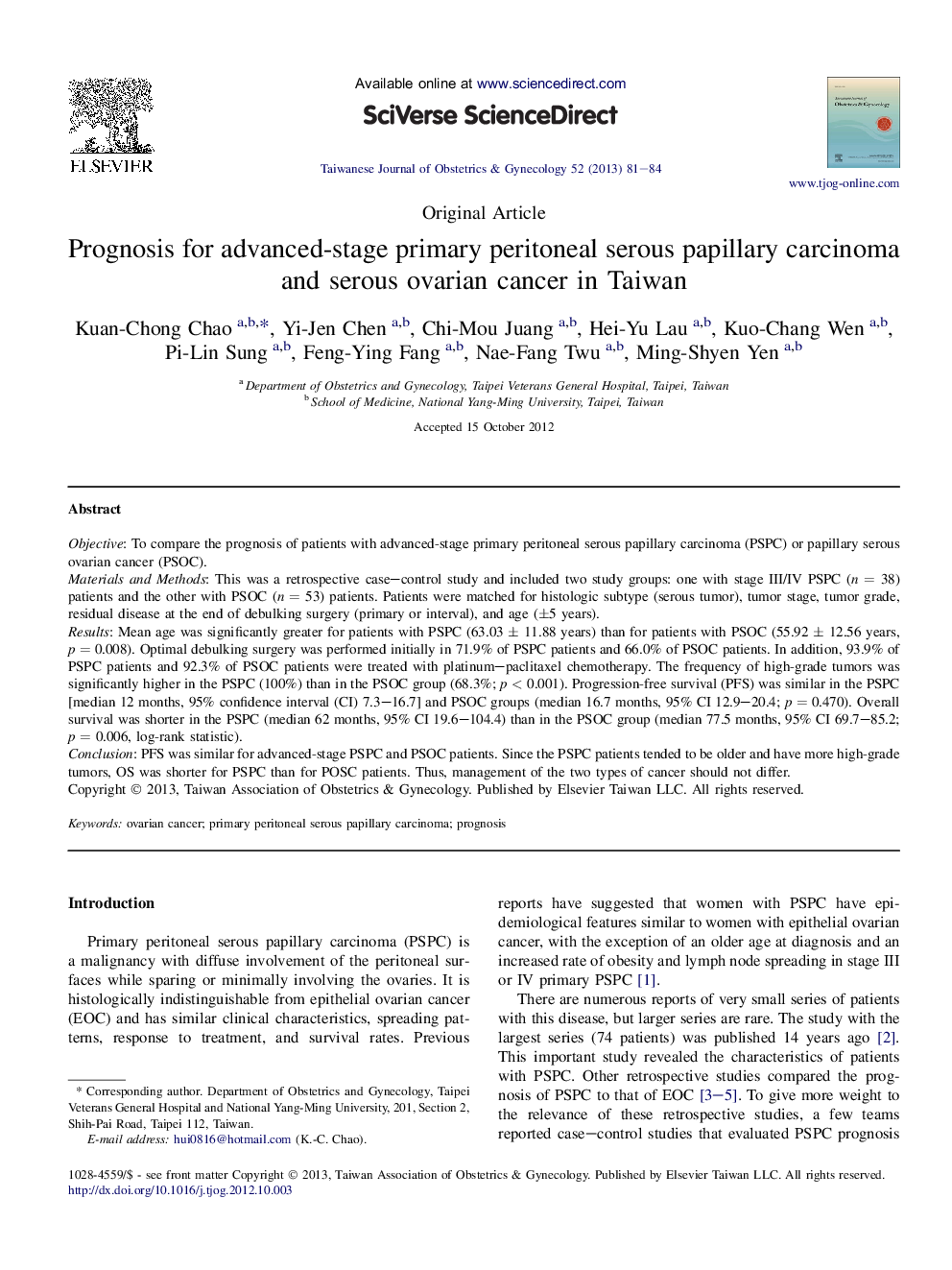| Article ID | Journal | Published Year | Pages | File Type |
|---|---|---|---|---|
| 3975612 | Taiwanese Journal of Obstetrics and Gynecology | 2013 | 4 Pages |
ObjectiveTo compare the prognosis of patients with advanced-stage primary peritoneal serous papillary carcinoma (PSPC) or papillary serous ovarian cancer (PSOC).Materials and MethodsThis was a retrospective case–control study and included two study groups: one with stage III/IV PSPC (n = 38) patients and the other with PSOC (n = 53) patients. Patients were matched for histologic subtype (serous tumor), tumor stage, tumor grade, residual disease at the end of debulking surgery (primary or interval), and age (±5 years).ResultsMean age was significantly greater for patients with PSPC (63.03 ± 11.88 years) than for patients with PSOC (55.92 ± 12.56 years, p = 0.008). Optimal debulking surgery was performed initially in 71.9% of PSPC patients and 66.0% of PSOC patients. In addition, 93.9% of PSPC patients and 92.3% of PSOC patients were treated with platinum–paclitaxel chemotherapy. The frequency of high-grade tumors was significantly higher in the PSPC (100%) than in the PSOC group (68.3%; p < 0.001). Progression-free survival (PFS) was similar in the PSPC [median 12 months, 95% confidence interval (CI) 7.3–16.7] and PSOC groups (median 16.7 months, 95% CI 12.9–20.4; p = 0.470). Overall survival was shorter in the PSPC (median 62 months, 95% CI 19.6–104.4) than in the PSOC group (median 77.5 months, 95% CI 69.7–85.2; p = 0.006, log-rank statistic).ConclusionPFS was similar for advanced-stage PSPC and PSOC patients. Since the PSPC patients tended to be older and have more high-grade tumors, OS was shorter for PSPC than for POSC patients. Thus, management of the two types of cancer should not differ.
